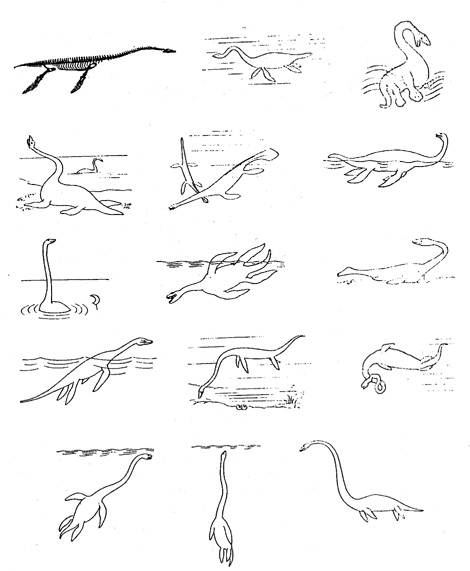Neck function

Contrary to early work (Zarnik 1925), plesiosaur necks did not have the extreme flexibility required to coil up and strike prey in the manner of some snakes and pleurodiran turtles (Pough et al. 1996). Tall neural spines on the top of the neck vertebrae limited vertical (up and down) flexibility, while processes on the anterior and posterior surfaces of the vertebrae (prezygapophyses and postzygapophyses) limited horizontal (side to side) mobility. The neck was therefore only moderately flexible, and plesiosaurs could not adopt the swan-like pose often depicted in artwork of these creatures (Storrs 1993, Zammit et al. (2008).
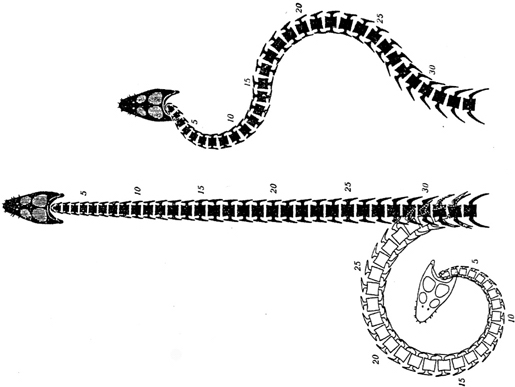
The plesiosaur neck was not an entirely stiff rod, either. Zammit et al. (2008) calculated the likely range of motion of the neck in elasmosaurids – the plesiosaurs with the longest necks. They estimated a maximum flexibility of 87–155° dorsally, 75–177° ventrally, and 94–176° laterally, depending upon the thickness of cartilage present between adjacent vertebrae (Zammit et al. 2008).

Completely preserved plesiosaur skeletons with articulated necks give some impression of the possible amount of flexibility in certain taxa, but we have to be careful about taking this evidence at face value because post-mortem processes and fossilisation can potentially lead to distortion of the skeleton. The neck posture in the fossil skeletons may have been impossible in life. With this in mind, looking at the fossils is still informative.
The vast majority or articulated plesiosaur skeletons (i.e. preserved articulated in the rock) have necks that extend out in front of the animal in a straight or very gently curved line. The holotype of Plesiosaurus is a typical example of this straight-necked posture.
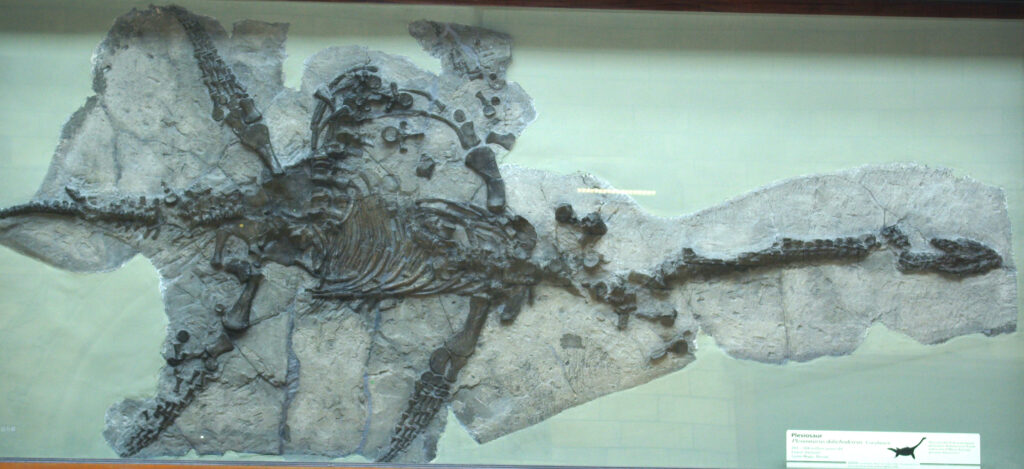
However, there are exceptions. The neck in a specimen of Thalassiodracon (NHMUK 2020* [14551]) is notably curved. The cervical vertebrae in this specimen are exposed in side view (while the head, body, and flippers are exposed in ventral view) so the neck curves upwards. None of the vertebrae appear to be disarticulated so this could represent a plausible degree of flexibility.
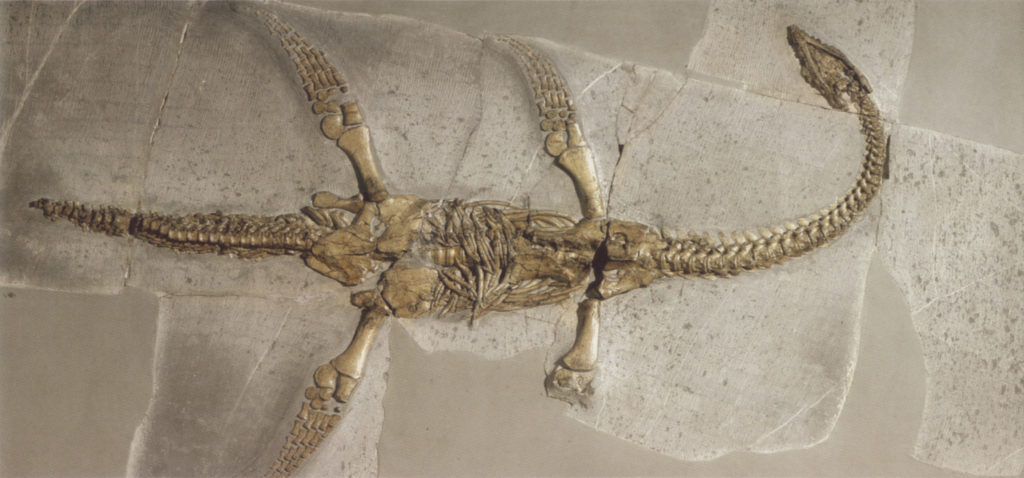
The neck in the holotype specimen of the leptocleidid Nichollssaura has an S-shaped twist at its distal end, suggesting a substantial amount of side-to-side flexibility (Nagesan et al. 2018).
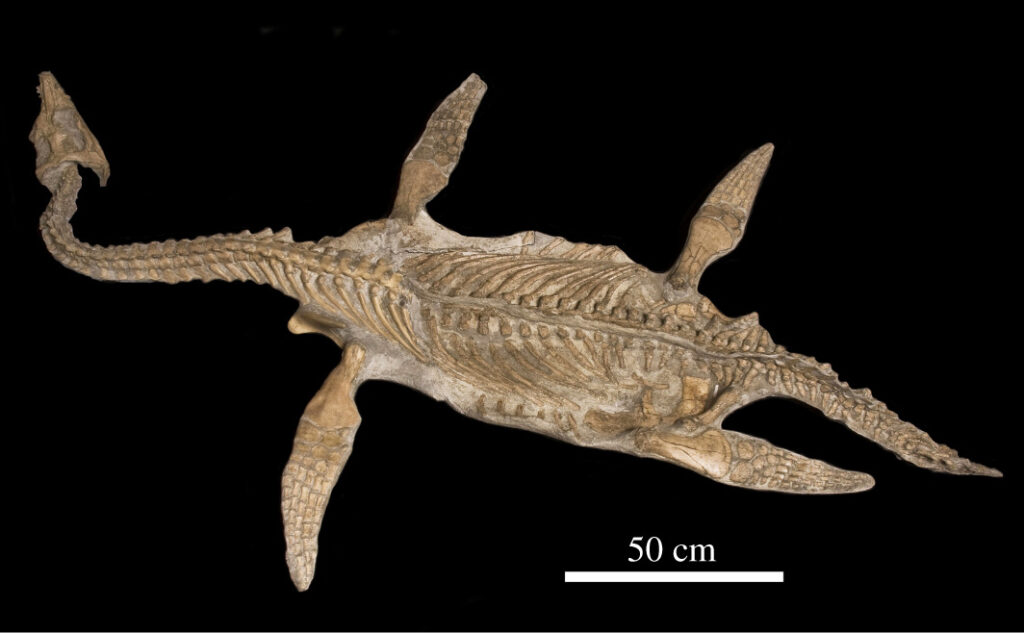
The neck of the exceptionally well-preserved holotype of the osteologically immature polycotylid Mauriciosaurus curves about 85 degrees to the side (Frey et al. 2018). According to Frey et al. (2018), “the anterior and posterior margins of the neural spines contact each other and define the neck curvature”. However, it looks like some of the vertebral centra are disarticulated, so this skeleton might be exceeding the biologically possible range of motion in the living animal. Since polycotylids have very short necks anyway, this doesn’t much help us to understand the long-necked plesiosaurs.
The neck of a specimen of Seeleyosaurus curves gently upwards, but one or two of the neural spines near the base of the neck appear to be overlapping each other.
The neck of the holotype specimen of the elasmosaurid Hydrotherosaurus curves gradually upwards for most of its length, and is broken just behind the head. This amount of flexibility appears entirely reasonable.
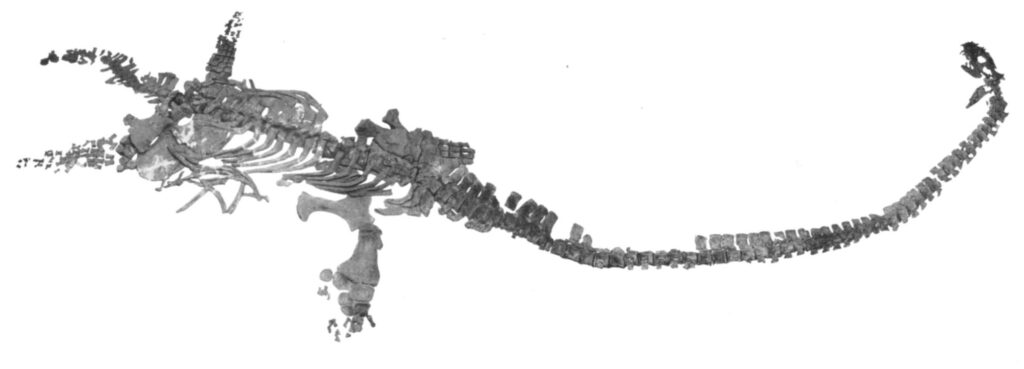
There have been many differing historical interpretations of plesiosaur neck posture and function, many of them certainly impossible. However, the function of the long plesiosaur neck remains controversial and unresolved today (Martill et al. 1994). For more information about neck flexibility in elasmosaurids, and their possible function, see my blog article about elasmosaurid necks. Despite this uncertainty, the long neck probably provided a mechanism for approaching prey, such as schools of fish, with stealth and speed (Massare 1988).
